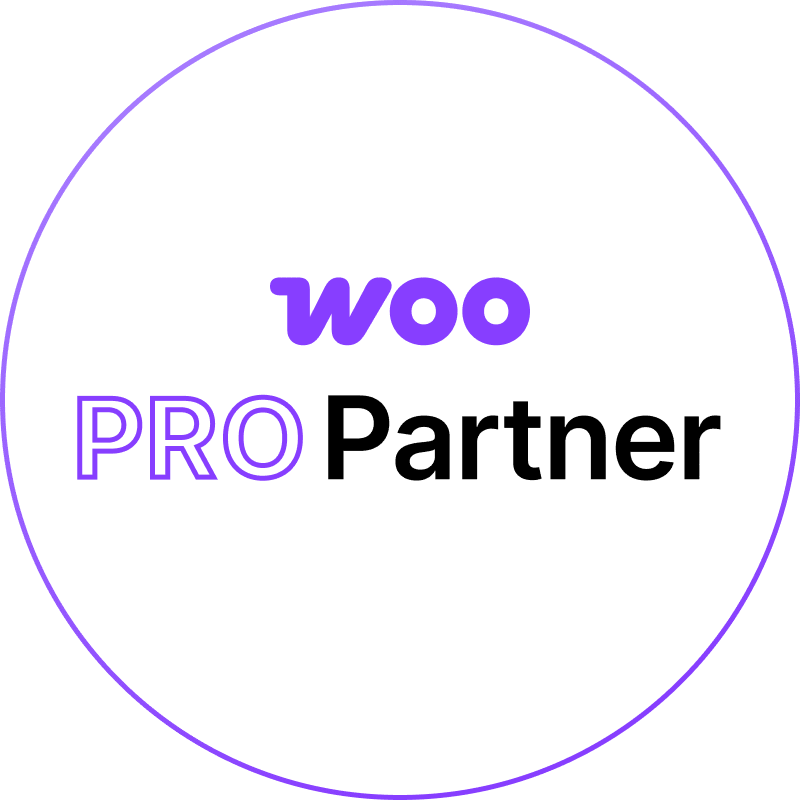Why Short-Form Video Is Still King in 2025: Tips for Keeping Up
Short-form video has reshaped the digital landscape, and its reign continues strong in 2025. From TikTok and Instagram Reels to YouTube Shorts, these quick, engaging clips have become the centerpiece of content strategies for brands, influencers, and creators alike. Their widespread appeal lies in their ability to capture attention quickly, deliver memorable messages, and drive high levels of engagement across diverse audiences.
The continued dominance of short-form video can be attributed to its adaptability and effectiveness. Whether it’s a viral dance trend, a quick product demo, or a concise tutorial, short-form video caters to modern audiences who demand content that’s engaging, accessible, and easy to consume. With platforms prioritizing video content in their algorithms, short-form formats have proven to be a powerful tool for businesses looking to increase visibility and drive results.
For brands navigating the ever-changing social media landscape, incorporating short-form video into their strategy isn’t just an option—it’s a necessity. Partnering with a social media marketing agency can help businesses create impactful short-form content that resonates with their target audience while staying ahead of emerging trends.
The Psychology Behind Short-Form Video Success
The success of short-form video is deeply rooted in psychology. Modern audiences have shorter attention spans, and platforms like TikTok and Instagram are designed to cater to this shift. Short-form videos deliver a dopamine boost by providing immediate gratification, whether it’s through humor, inspiration, or valuable information.
This format aligns perfectly with the way people consume content in today’s fast-paced digital world. Unlike long-form content, which requires a time commitment, short-form videos allow viewers to engage with bite-sized pieces of information or entertainment without disrupting their day. This quick, satisfying experience keeps users coming back for more, fueling higher levels of engagement and retention.
Another psychological factor is the fear of missing out (FOMO). Short-form video trends move quickly, creating a sense of urgency for users to participate, watch, or share before the moment passes. For brands, tapping into this behavior can drive viral success and build deeper connections with their audience.
Understanding the psychology behind short-form video can help marketers craft content that not only captures attention but also keeps viewers coming back for more. By focusing on storytelling, emotional resonance, and trend participation, businesses can maximize the impact of their short-form video strategies.
Platform Wars: Who’s Leading the Short-Form Space
In 2025, the competition among platforms offering short-form video content is fiercer than ever. TikTok remains a dominant player, having set the standard for the genre with its innovative algorithm and trend-driven culture. However, platforms like Instagram Reels and YouTube Shorts are rapidly evolving, introducing features designed to capture market share and engage users more effectively.
Instagram Reels, for example, benefits from its integration with the broader Instagram ecosystem, making it easy for users to discover short-form videos alongside traditional posts and Stories. This versatility has helped Reels maintain its appeal among both creators and brands. Meanwhile, YouTube Shorts leverages YouTube’s existing audience and search functionality, making it a valuable platform for creators who want to combine short-form content with long-form videos.
Emerging platforms like Triller and Snapchat Spotlight are also gaining traction, catering to niche audiences and offering unique features that differentiate them from the major players. Each platform has its strengths, and understanding these nuances is crucial for brands looking to maximize their short-form video strategy.
By staying informed about platform trends and audience behaviors, businesses can tailor their short-form content to reach the right audience on the right platform. With the continued rise of short-form video, investing in a diversified platform strategy is essential for long-term success.
What Makes Short-Form Video So Engaging?
Short-form video captivates audiences through its ability to deliver impactful messages in a concise and visually appealing format. This engagement stems from several key elements: storytelling, visuals, pacing, and interactivity. Each plays a role in making short-form content irresistible to modern viewers.
Storytelling is at the heart of effective short-form videos. In just a few seconds, creators craft narratives that resonate with audiences emotionally, whether through humor, inspiration, or relatability. For example, a quick product demonstration can tell the story of how a product solves a common problem, creating an instant connection with viewers. The brevity of short-form video forces brands to prioritize clarity, ensuring every second contributes to the message.
Visuals and pacing further enhance engagement. Short-form videos rely on dynamic, eye-catching visuals to grab attention immediately. Quick cuts, bold colors, and engaging transitions keep viewers hooked, while fast-paced edits maintain energy throughout the video. This format aligns with how users scroll through feeds, ensuring content stands out in a sea of posts.
Interactivity is another key factor. Many platforms encourage creators to incorporate trends, challenges, or user-generated content, making audiences feel involved. For instance, a brand launching a hashtag challenge on TikTok can spark thousands of user-created videos, amplifying reach and engagement. By focusing on these core elements, short-form videos deliver a compelling experience that keeps audiences coming back for more.
The Role of Algorithms in Short-Form Video Success
Algorithms are the secret weapon behind short-form video’s dominance. Platforms like TikTok, Instagram Reels, and YouTube Shorts rely on sophisticated recommendation engines to surface content tailored to each user’s preferences. This personalized approach ensures that short-form videos reach the right audience, driving higher engagement and retention rates.
For marketers, understanding how these algorithms work is critical. Most prioritize content that generates immediate interactions, such as likes, shares, comments, and watch time. For example, TikTok’s algorithm favors videos that capture attention in the first few seconds, rewarding content with strong hooks and high engagement by pushing it to more users. Similarly, Instagram Reels promotes videos that align with trending audio or hashtags, creating opportunities for brands to tap into viral content.
Consistency also plays a role in algorithm success. Platforms reward creators who post regularly, as frequent uploads increase the chances of a video being featured. For brands, this means developing a steady stream of short-form content that aligns with their messaging and audience preferences.
Finally, algorithms value originality and authenticity. Recycled or overly promotional content often performs poorly compared to videos that feel genuine and relatable. By focusing on creative storytelling and user-centered content, brands can maximize their visibility and impact on these platforms.
The Business Case for Short-Form Video
Short-form video isn’t just a trend—it’s a powerful business tool that delivers measurable results. For brands, this format offers an unparalleled opportunity to reach and engage audiences while driving key outcomes like brand awareness, lead generation, and conversions.
One of the biggest advantages of short-form video is its cost-effectiveness. Unlike high-production campaigns, short-form videos can be created quickly and affordably, making them accessible to businesses of all sizes. Platforms like TikTok and Instagram Reels provide easy-to-use editing tools that streamline the process, allowing brands to produce content that feels professional without the need for extensive resources.
The ROI of short-form video is also impressive. Studies show that video content drives higher engagement and conversion rates than static images or text posts. For example, a quick testimonial or product demo can capture attention and build trust, leading to increased sales. Additionally, short-form videos are highly shareable, amplifying reach and generating organic growth.
Case studies highlight the success of short-form video across industries. A beauty brand, for instance, might use TikTok to showcase a new product with a creative tutorial, driving both engagement and purchases. Similarly, a tech company could leverage YouTube Shorts to explain features in an engaging way, boosting interest and traffic to their website.
For businesses navigating the digital landscape, short-form video is an essential component of any marketing strategy. Its ability to connect with audiences quickly and effectively makes it a cornerstone of modern brand communication, ensuring relevance in an increasingly competitive market.
Common Challenges of Short-Form Video Content
While short-form video offers immense potential, creating successful content comes with its own set of challenges. One of the primary difficulties is balancing creativity with brevity. In just 15 to 60 seconds, brands need to convey a compelling message, establish a connection, and inspire action—all without overwhelming or confusing the viewer. Achieving this requires meticulous planning and a clear understanding of the target audience.
Another challenge is avoiding oversaturation. The popularity of short-form video means that users are inundated with a constant stream of content. For brands, this makes standing out increasingly difficult. Over-reliance on trends or repetitive formats can lead to diminishing returns as audiences grow desensitized to similar styles of content. To maintain engagement, brands must consistently innovate and find fresh ways to capture attention.
Authenticity is also a double-edged sword. While audiences gravitate toward genuine, relatable content, achieving authenticity without appearing forced or inauthentic can be tricky. This is particularly challenging for brands that traditionally rely on polished, corporate messaging. Striking the right balance between professionalism and relatability is critical for success in the short-form space.
Lastly, keeping up with platform-specific requirements adds complexity. Each platform has unique algorithms, formats, and audience preferences, requiring brands to adapt their content accordingly. For instance, a video that performs well on TikTok might need significant adjustments to resonate on Instagram Reels or YouTube Shorts. This platform-specific optimization demands time, effort, and a strategic approach.
Tips for Staying Ahead of Short-Form Trends
Staying ahead in the fast-paced world of short-form video requires constant innovation and adaptability. One of the most effective ways to remain competitive is to closely monitor analytics and audience feedback. Platforms like TikTok and Instagram provide detailed insights into performance metrics such as watch time, engagement rates, and audience demographics. Analyzing this data helps brands identify what works and what doesn’t, enabling them to refine their strategy in real time.
Experimentation is another key strategy. Short-form video thrives on trends, and being an early adopter of new formats or features can give brands a competitive edge. For example, experimenting with emerging trends like augmented reality (AR) effects, green screen capabilities, or collaborative videos can keep content fresh and engaging. By staying proactive and testing new ideas, brands can position themselves as trendsetters rather than followers.
Leveraging user-generated content (UGC) is also a powerful way to stay relevant. Encouraging audiences to create and share their own videos featuring a brand’s products or services fosters a sense of community and boosts authenticity. Brands can amplify this content by sharing it on their own channels, demonstrating genuine engagement with their audience.
Finally, maintaining agility is crucial. The short-form video landscape evolves rapidly, with new trends, algorithms, and platforms emerging regularly. Brands that stay informed about these changes and remain flexible in their approach will be better equipped to adapt and thrive.
Tools and Techniques for Efficient Short-Form Video Creation
Creating high-quality short-form videos efficiently is a top priority for brands. Fortunately, a wide range of tools and techniques can streamline the production process while maintaining creative standards.
Editing tools like CapCut, InShot, and Adobe Premiere Rush are popular choices for crafting professional-looking videos quickly. These platforms offer intuitive interfaces and features such as templates, text overlays, and music integration, allowing creators to produce polished content without extensive editing skills. For brands managing multiple social media accounts, tools like Canva provide customizable templates optimized for various platforms, saving time while ensuring consistency.
Pre-planning is another essential technique. Storyboarding helps map out the structure of a video, ensuring every second is purposeful and impactful. A well-thought-out storyboard minimizes the need for revisions, making the production process smoother.
Batch content creation is another time-saving strategy. By dedicating specific days to filming and editing multiple videos, brands can build a library of content ready to post over time. This approach not only saves time but also allows for a more cohesive content strategy.
Automation tools like Later and Buffer further enhance efficiency by enabling brands to schedule short-form videos in advance. These platforms provide insights into optimal posting times, ensuring content reaches the right audience at the right moment.
By leveraging these tools and techniques, brands can produce engaging short-form videos at scale without compromising quality or creativity.
The Future of Short-Form Video Marketing
The dominance of short-form video shows no signs of slowing down. In fact, its influence is expected to grow even further as platforms continue to innovate and audiences increasingly favor quick, engaging content. One major trend on the horizon is the integration of advanced technologies such as artificial intelligence (AI) and augmented reality (AR) into short-form video creation. AI tools like automated editing and personalized recommendations will streamline the production process, while AR features will enable more immersive and interactive experiences.
Another key development is the rise of hyper-personalized content. As algorithms become more sophisticated, they will increasingly deliver videos tailored to individual user preferences. This level of personalization will enhance audience engagement and make short-form video an even more powerful marketing tool.
Additionally, short-form video is likely to expand beyond traditional social media platforms. E-commerce sites, news outlets, and even educational platforms are integrating short-form video into their user experiences, broadening its applications and reach. For brands, this diversification presents new opportunities to connect with audiences in innovative ways.
Finally, the importance of authenticity will only grow. Audiences are becoming more discerning, favoring content that feels genuine and relatable over overly polished productions. Brands that prioritize authenticity and adapt to emerging trends will be best positioned to succeed in the evolving landscape of short-form video marketing.
Short-form video remains king in 2025, and its future is bright. By staying innovative, leveraging the right tools, and keeping a finger on the pulse of audience preferences, brands can continue to harness its power to drive engagement, build connections, and achieve marketing success.

















